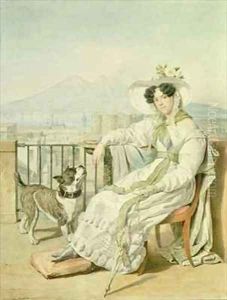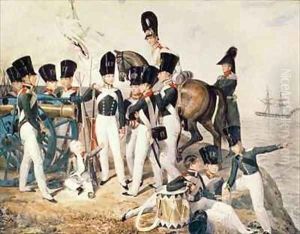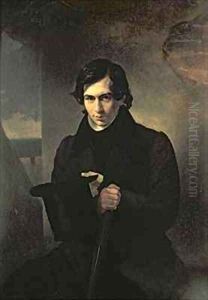Aleksandr Pavlovich Bryullov Paintings
Aleksandr Pavlovich Bryullov, also known as Alexander Brullov, was a prominent Russian artist, widely recognized for his prowess in painting, architecture, and teaching. Born on December 12, 1798, in St. Petersburg, Russia, he was part of a creative family; his father was a sculptor and his brother, Karl Bryullov, would also become a famous painter.
Bryullov received his early education at the Imperial Academy of Arts in St. Petersburg, where he honed his skills in architecture. Even though he was less known than his brother Karl, who was a celebrated romantic painter, Aleksandr made significant contributions to Russian architecture and academic art. After finishing his studies at the Imperial Academy, he traveled extensively through Europe, a common practice for young artists of the time, which allowed him to study classical and contemporary art first-hand.
During his travels, he spent a considerable amount of time in Italy, where he was influenced by the Italian Renaissance and Neoclassicism. This experience is evident in his architectural designs, which often combined elements of classical grace and clarity with neoclassical styles. His architectural achievements include the design of the Lutheran Church of St. Peter and St. Paul in St. Petersburg and work on the interior of St. Isaac's Cathedral.
Aside from his architectural pursuits, Bryullov also taught at the Imperial Academy of Arts, influencing a generation of Russian artists and architects. He was highly respected as an educator and his contributions to the Russian art community extended beyond his personal creative work.
Bryullov's later years were marked by a decline in health, leading to his retirement in the 1860s. He passed away on January 12, 1877, leaving behind a legacy as a key figure in the development of Russian architecture during the 19th century. Today, his works and influence are recognized in the context of Russian art history, particularly in the areas of neoclassical architecture and academic art education.



